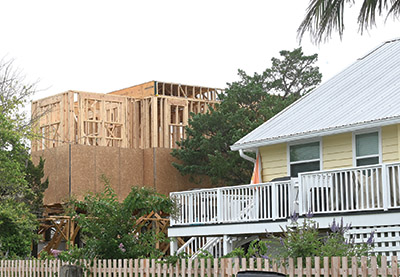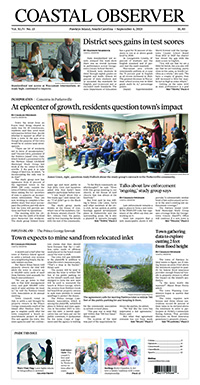Pawleys Island
Push for historic preservation turns attention to extra building height

As Pawleys Island moves forward with efforts to preserve its vintage beach houses, some officials are questioning whether a measure to raise houses out of the way of flood waters is working against efforts to maintain the town’s traditional appearance.
“Raising houses just doesn’t make sense to me,” said John Hildreth, who chairs the Planning Commission. “We are going to be a skyscraper beach community.”
He has led the effort to adopt a historic preservation program on the island.
The town requires houses to be raised 3 feet above the minimum required by the federal flood insurance program. The extra height helps property owners in the town qualify for a discount on federal flood insurance premiums.
The extra height applies to new homes and those that are renovated at a cost of more than 50 percent of their appraised value. Part of the town’s preservation effort is tied to an exemption from that requirement for historic structures.
“That’s been a big part in getting that going,” commission member Mark Hawn said.
The town wants to make compliance with historic preservation measures voluntary.
The commission learned last week that it will not receive a $20,000 state grant to help fund an inventory of historic structures or develop a preservation program. It voted to recommend that Town Council spend the $20,000 budgeted to match the grant to hire a consultant to start the work anyway.
Commission members said the town could probably cover the lost grant funds with donations.
“This may turn around and actually allow us to get there faster,” commission member Paul Groce said.
Identifying houses that are over 50 years old, is the first step toward creating a preservation program.
Even though it didn’t get the grant, the town established a good relationship with the State Historic Preservation Office, Dan Newquist, the town administrator, said.
“The last thing I want to do is lose momentum,” he said.
The preservation effort grew out of the town’s adoption of design guidelines for new houses in 2021. Officials were concerned that the island was losing its traditional architecture.
“A lot of what we’re doing now with historic preservation is to keep from jacking the houses way up,” Hildreth said.
He asked if the town could scrap the 3-foot extra elevation.
“It’s great for insurance in general,” Groce said, and it also makes sure that houses will comply if the federal requirements become more stringent. “It’s the conservative approach.”
Although houses that meet the requirement look tall during construction, landscaping helps them fit in, Groce added.
Newquist also questioned how the town would handle a request from a property owner to go above the federal minimum if the town reduced its requirement.
He also noted that elevations went down in most areas of the island when new federal flood maps were issued in 2023.
“We were lucky they didn’t get higher,” he said.




